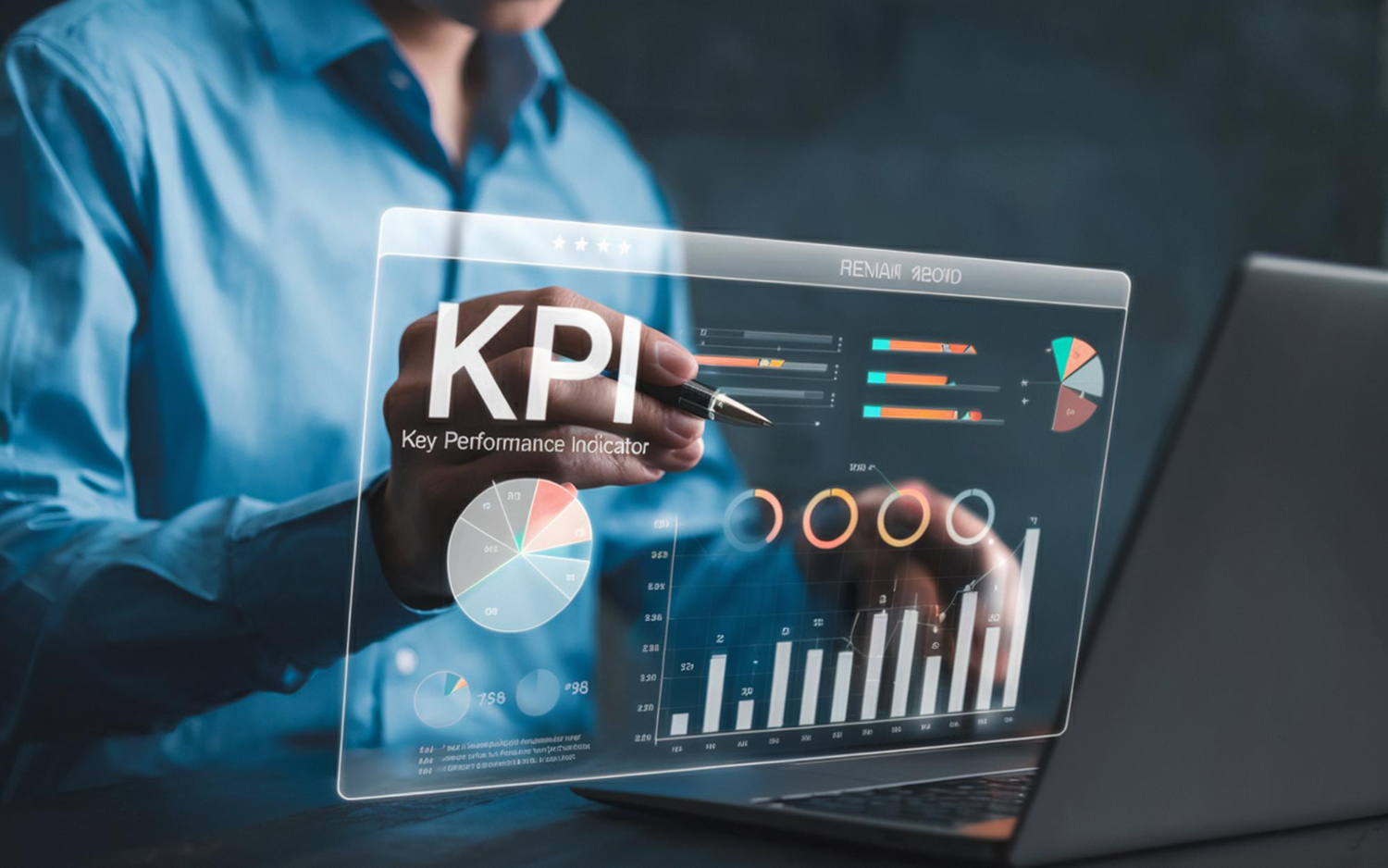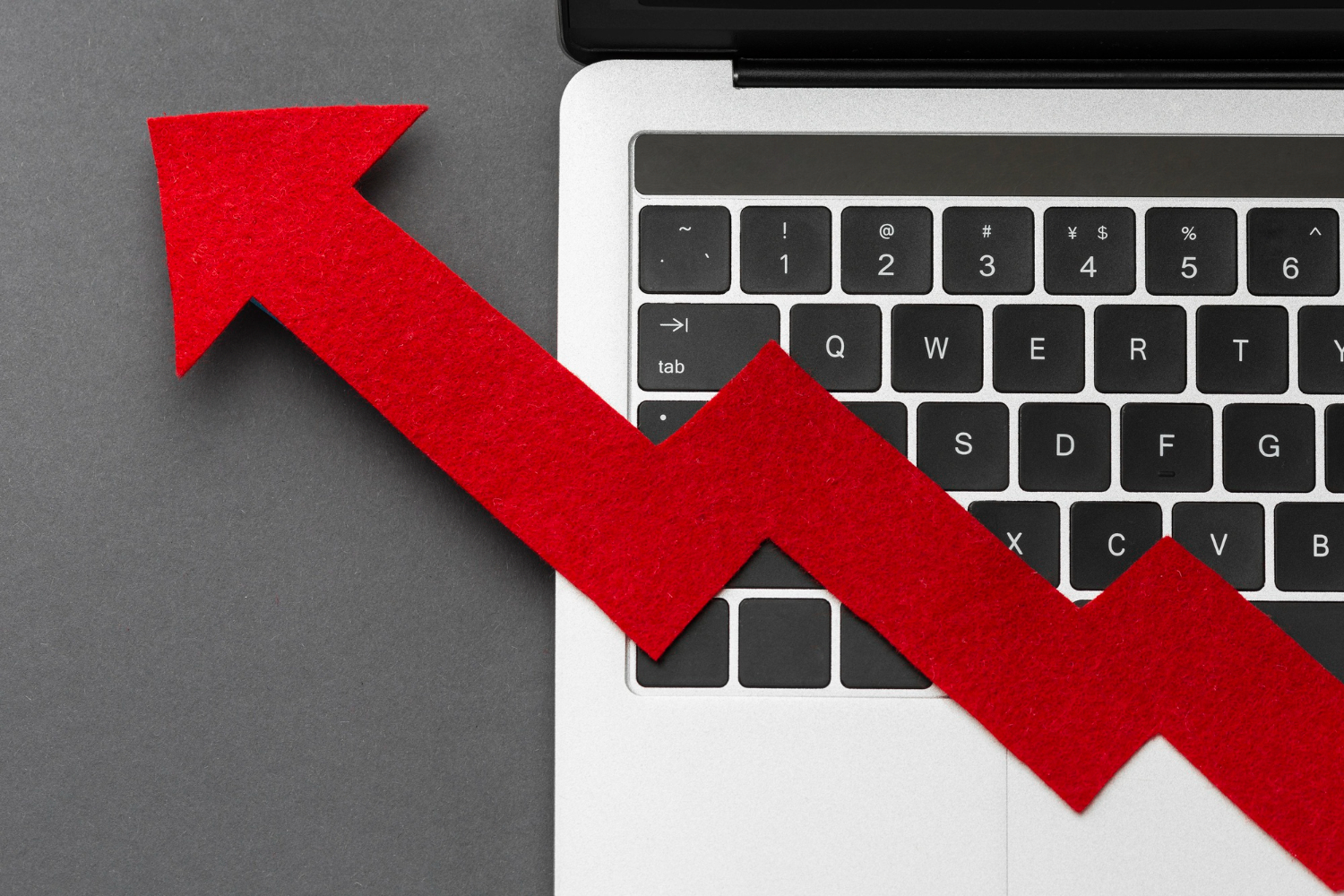Defining your pricing policy: guide to effective strategies
Pricing policy represents a major strategic lever in business performance. In the digital age and artificial intelligence era, pricing methods are rapidly evolving, offering new optimization opportunities. Pricing decisions, more than ever guided by data and advanced analytical tools, require deep understanding of available strategies. Discover modern approaches and concrete examples to build a high-performing pricing policy in 2025.
- Essential fundamentals: Pricing policy is a cornerstone of the marketing mix that directly influences revenue and positioning. It's shaped by internal factors (costs, objectives), external factors (market, competition) and behavioral factors (price sensitivity).
- Diverse strategies: Multiple strategies exist, such as skimming (targeting premium), penetration (gaining market share with low prices), competitive alignment, or price segmentation (prices adapted to different customer profiles).
- Methodical definition: Establishing an effective pricing policy requires thorough market and demand analysis, precise cost and margin calculations, and clear integration of the company's commercial objectives.
- Technology impact: Modern tools, particularly AI and dynamic pricing, offer advanced capabilities to analyze data, personalize prices in real-time and optimize profitability, while effectively communicating perceived value.
The fundamentals of an effective pricing policy
Definition and importance in the marketing mix
Pricing policy represents all of a company's pricing decisions. In the marketing mix, it's the only element that directly generates revenue among the 4Ps (Product, Price, Place, Promotion). A consistent sales action plan ensures that pricing decisions align with the company’s broader commercial strategy.
Price choices directly influence brand positioning and consumer perception. A recent study shows that 83% of buyers consider price as the primary purchase criterion in 2025.
New technologies, particularly predictive analytics, now allow real-time price adjustments based on buying behaviors. For example, major retailers like Carrefour adapt their prices several times a day using machine learning algorithms.
Key factors influencing pricing
AI agents now reveal complex pricing influence factors. Customer data analysis identifies previously invisible variables like weather, local events or social media trends.
Modern pricing relies on three main categories:
- Internal factors: production capacity, variable costs, profitability objectives
- External factors: seasonality, economic context, regulations
- Behavioral factors: price sensitivity, brand loyalty, purchase journey
A concrete example: Rakuten France adjusts its prices in real-time based on over 50 variables, including conversion rates by segment and price elasticity by product category.
The impact of positioning on prices
A brand's positioning determines its overall pricing strategy. Our analyses with Rakuten France reveal that companies using automation tools set their prices 47% more effectively according to their market segment.
Perceived value plays a central role in this equation. A premium brand like Cabaïa can maintain higher margins thanks to a carefully crafted image. Conversely, discount retailers favor low prices to reinforce their accessibility image.
Modern technologies now enable adapting pricing positioning by distribution channel. For example, Desoutter Tools modulates its prices between physical stores and marketplace according to specific expectations of each customer segment.
Different pricing strategies to master
The skimming strategy: targeting premium
French brand Cabaïa perfectly illustrates a modern skimming strategy. Their fashion accessories, sold 30% above market rate, target demanding customers through predictive analysis of premium buying behaviors.
Artificial intelligence revolutionizes this high-end approach. Algorithms developed by our team identify the most profitable segments and adjust prices according to premium customers' willingness to pay.
A 2025 study demonstrates that 65% of consumers accept premium pricing when customer experience justifies this exclusive positioning. To succeed, product differentiation remains paramount: unique design, superior quality or technological innovation must legitimize this ambitious pricing choice.
Penetration strategy to gain market share
Low pricing strategy emerges as a formidable approach to rapidly conquer market share. Our analyses with Rakuten France reveal that brands using automated pricing systems capture an average of 23% additional customers in their first year.
Predictive tools now enable adjusting these penetration prices with surgical precision. For example, French startup Maison du CBD used our analysis platform to identify the optimal threshold between sales volume and profitability, increasing market share by 45% in 6 months.
Mobile app Lydia represents a textbook case: by offering free money transfers, it attracted 3 million users before progressively introducing profitable premium services.
Strategic alignment with competition
AI solutions transform traditional pricing alignment in 2025. Our collaboration with Desoutter Tools demonstrates that automated systems now now detect competitive analysis and competitive mapping data in real time, enabling instant pricing adjustments.
Company Leroy Merlin expertly exploits this approach. Their prices automatically adapt according to an optimal 5% gap from direct competitors, while preserving a minimum 15% profit margin.
Predictive technologies now anticipate market pricing movements 48 hours in advance. For example, large retailers modulate their prices according to rivals' future promotions, avoiding destructive price wars.
Segment-specific pricing
Dynamic price segmentation revolutionizes price personalization in 2025. Our behavioral data analysis reveals a 32% conversion rate increase when brands adapt their prices to micro-segments.
A remarkable case: French brand Cabaïa modulates its prices according to five distinct buyer profiles, from fashion enthusiast to bargain hunter. This tailored approach generates an average 28% margin increase per segment.
Predictive technologies now enable anticipating price sensitivity variations by segment. For example, startup Maison Kitsuné automatically adjusts its prices according to customer journey: a first-time buyer discovers attractive entry prices, while a loyal customer accesses exclusive premium collections.
How to define your pricing policy in 2025?
Market and demand analysis
Advanced learning algorithms radically transform market understanding in 2025. The new platform developed by our AI software company maps demand variations across 8 key dimensions, from purchasing power to buying preferences. This level of insight also enables a better understanding of customer satisfaction and perceived value behind pricing decisions.
A survey of 1,500 French consumers highlights increased sensitivity to differentiated pricing by sales channels. Buyers now accept a 15% higher price in-store versus digital for an enriched experience.
Penetration policy proves particularly effective on emerging segments. Predictive analysis conducted with Rakuten France demonstrates that a 20% lower price during launch phase guarantees optimal adoption rates, before progressive repositioning toward higher margins.
Cost calculation and optimal margins
Our new software solution transforms margin calculation in 2025. Automation technologies enable companies to adjust their production costs in real-time. A telling example: Desoutter Tools uses our system to modulate its prices according to 8 variables, from raw material costs to logistics fees.
French startup Maison Kitsuné expertly exploits this approach. Thanks to granular data analysis, their gross margin progressed by 12 points on premium collections. Dynamic cost calculation enables them to instantly adapt prices to market fluctuations.
Price levels now automatically adjust to maintain optimal profitability, while remaining consistent with desired brand positioning.
Integration of commercial objectives
Synchronizing commercial objectives with pricing policy revolutionizes in 2025. Our predictive analysis platform enables brands to align their prices according to multiple commercial parameters: target conversion rate, desired market share or expected net margin.
A brand like Maison du CBD successfully exploits this approach. Thanks to predictive models, it modulates its prices according to priority customer segments. Result: 35% sales progression on premium products, without degrading overall profitability.
Companies now use intelligent dashboards to visualize price impact on their objectives. For example, Cabaïa daily adjusts its pricing grid according to growth forecasts by sales channel.
Technological innovation serving prices
AI in pricing optimization
AI solutions revolutionize pricing in 2025. Our new AI software company develops autonomous agents capable of analyzing over 200 variables simultaneously to define optimal pricing.
Rakuten France uses our machine learning technologies to personalize its prices according to purchase journey. The solution detects key moments when price adjustment will maximize purchase probability.
The automated system now integrates complex behavioral factors: purchase history, promotion sensitivity or payment preference. For example, a customer accustomed to premium purchases will see exclusive high-priced offers, while a bargain hunter receives suggestions adapted to their budget.
Dynamic pricing tools
Advanced pricing platforms transform price management in 2025. Our expertise reveals that top-performing software now integrates essential functionalities: real-time competitive monitoring, automatic margin adaptation according to demand and pricing modulation by sales channel.
French startup Maison du CBD uses our platform to adjust its psychological prices according to eight distinct variables. Result: 25% increase in average basket on premium ranges.
Companies now have intuitive interfaces to visualize pricing adjustment impact. A dashboard centralizes crucial data: conversion rate by segment, price elasticity and sales forecasts by product.
Predictive analysis of buying behaviors
Advanced predictive models revolutionize buying behavior understanding in 2025. Our expertise with Rakuten France demonstrates 85% increased accuracy in purchase decision anticipation thanks to behavioral algorithms.
Autonomous agents' computing power now enables simultaneous analysis of psychological price reactions, promotional offer impact and product lifecycle. An approach that transforms pricing strategy implementation.
Our new machine learning technology maps micro-decisional moments of customer journey. For example, a buyer hesitating on a gaming console receives a personalized suggestion at the precise moment when their purchase probability reaches maximum, creating real competitive advantage.
Case studies: winning pricing policies
Apple: the enduring premium strategy
The Apple brand maintains its tech luxury leadership through perfectly mastered premium pricing strategy. Its approach stands out through deliberately high prices that reinforce the brand's excellence and exclusivity image.
The recent iPhone 17 announcement starting at $1,299 illustrates this ambitious pricing policy. Apple justifies these amounts through unique user experience, refined design and constant innovations like the new M5 chip.
The brand applies subtle pricing differentiation between ranges: iPhone SE remains accessible at $529 while iPhone 17 Pro Max peaks at $1,899. This segmentation maintains premium character while reaching different buyer categories.
Amazon: large-scale dynamic pricing
The e-commerce giant daily adjusts over 2.5 million prices on its marketplace thanks to sophisticated algorithms. This massive dynamic pricing approach optimizes margins while maintaining maximum attractiveness against competitors.
Amazon's pricing fluctuations rely on real-time analysis of multiple variables: available stock, buying behaviors, competitor prices and even weather forecasts. For example, during Black Friday 2024, the company modulated its prices up to 20 times daily on most demanded products.
A popular product like a coffee machine can see its price vary 15% up or down according to demand peaks identified by algorithms. This pricing agility enables Amazon to maximize sales while preserving margins, with an average 23% basket progression on affected items.
Decathlon: mastered accessibility
The French sports brand places accessibility at the heart of its pricing strategy. Its approach relies on complete value chain mastery, from design to distribution, enabling technical equipment at affordable prices.
This policy materializes notably through attractive round prices on entry-level products. For example, a First Kick football sells for €3, while a Kalenji Running breathable shirt is offered at €6, making sports practice accessible to everyone.
The brand adopts a unique alignment policy: maintaining stable and consistent prices between different sales channels. This approach guarantees optimal readability for consumers, reinforcing confidence in product value for money.
Distributors facing pricing challenges
Carrefour and its guaranteed low prices policy
Carrefour revolutionizes its pricing strategy in 2025 with an unprecedented commitment: guaranteeing lowest prices on over 500 national brand products in all hypermarkets. This commercial offensive accompanies a new loyalty card offering permanent 10% discount on fruits and vegetables.
The distributor deploys a differentiated approach according to store formats. Hypermarkets offer aggressive prices on major brands, while convenience stores focus on targeted promotions and exclusive offers adapted to local needs.
To reinforce its positioning, the retailer reduced prices of 2,500 products by over 10% in 2024. This massive reduction combined with price stabilization in 2025 marks a break from previous years' inflationary spiral.
Auchan and its differentiation strategy
Facing market mutations, Auchan deploys major transformation of its pricing model in 2025. The retailer relies on balanced approach between attractive prices and product quality, with €62 million invested in price reduction on 1,600 essential references.
The brand reinforces its value proposition through innovative loyalty program. Cardholders now benefit from 5% discount on distributor brands and up to 10% on traditional fresh departments.
To optimize territorial coverage, Auchan resizes commercial surfaces with 8,000 m² limit per hypermarket. This rationalization accompanies accelerated development of convenience formats and digital, responding to new consumer expectations.
Innovative North American distributors
North American distribution giants revolutionize their pricing approaches through ultra-performing predictive technologies. Walmart experiments with electronic labels connected to proprietary AI, modifying prices in real-time according to store traffic and available stock.
Target deploys innovative approach called "DynamicValue," combining weather data and purchase history to personalize offers. A telling example: during heat waves, cold beverage prices automatically adjust according to next 48-hour temperature forecasts.
Kroger disrupts codes with "SmartPrice" program, using facial recognition to offer prices adapted to each customer's profile scanning products. This technology enables displaying different prices according to purchase history and promotion sensitivity.
Value transfer in pricing policy
Value-added communication
Offer valorization takes new dimension through marketing AI agents. These technologies enable adapting messages according to customer sensitivity to high prices and value perception.
Brands like Cabaïa excel in communicating their unique value. Their personalized visuals highlight premium product attributes to most receptive segments.
Our analyses with Rakuten France demonstrate that targeted communication of transfer pricing increases consumer price acceptance. For example, a customer sensitive to eco-responsibility will be more receptive to arguments justifying surcharge linked to sustainable materials.
Price adaptation according to channels
Predictive technologies revolutionize multichannel pricing management in 2025. Our analysis demonstrates average 27% revenue increase among companies using AI to synchronize prices between physical stores, e-commerce and marketplaces.
French startup ManoMano applies innovative approach: its algorithms modulate prices according to buying behavior specific to each channel. Same product can display up to 15% price variation between mobile and desktop, based on observed conversion habits.
Pricing automation solutions guarantee overall consistency while maximizing performance per channel. For example, a computer equipment distributor increases marketplace prices by 8% during traffic peaks, while maintaining stable prices in-store to retain local customers.
Customer perception management
Marketing AI agents radically transform understanding of psychological reactions to prices. Analysis conducted with Desoutter Tools shows 78% of B2B buyers better accept high pricing when presentation adapts to their priority decision criteria.
Our AI platform now analyzes users' facial micro-expressions when confronted with online price displays. This exclusive technology, developed with Rakuten France, enables instantly adjusting product benefit highlighting according to detected emotional signals.
A striking example: Cabaïa uses this behavioral data to personalize sales argument display order. A design-sensitive customer sees creative visuals first, while a rational buyer directly accesses technical characteristics.
Mistakes to avoid in pricing policy
Underestimating perceived value
Poor perceived value evaluation represents major pitfall for many companies. Our collaboration with Desoutter Tools reveals 67% of brands underestimate maximum acceptable price by premium customers.
Modern digital tools now illuminate this blind spot. Specialized dashboard measures buyers' behavioral signals facing pricing variations — an approach inspired by methods like AIDA to better link attention, interest, desire and action to perceived value. This scientific approach reveals real psychological acceptance thresholds for prices.
French startup ManoMano illustrates this approach with its dynamic evaluation system. By analyzing visitor micro-interactions, it increased margins by 12% on professional range, without negative conversion impact.
Neglecting price-brand consistency
A break between pricing positioning and brand identity can seriously harm company credibility. Marketing AI agents reveal 8 out of 10 brands lose market share due to gap between prices and image.
French brand Sandro illustrates successful approach: its pricing algorithms adapt to behavioral signals while respecting premium DNA. This synchronization guarantees coherent experience, from displayed price to purchase act.
Our collaboration with Rakuten France demonstrates that pricing strategy aligned with brand values increases customer loyalty. For example, an eco-responsible brand maintains higher but justified prices through sustainable approach, reinforcing legitimacy among engaged consumers.
Lack of agility in price adjustment
Insufficient reactivity in price adjustment can cost companies up to 15% revenue in 2025. Analysis of 500 French companies highlights this alarming finding.
Next-generation pricing automation platforms transform this weakness into opportunity. For example, Leclerc E-commerce quadrupled its pricing adjustment velocity thanks to predictive algorithms.
Real-time synchronization becomes unavoidable standard. Modern AI solutions now enable updating prices every 3 minutes, considering stock variations, instant demand and competitive movements.
FAQ
What's the essential first step to define a pricing policy?
Thoroughly analyze your costs, understand your market (customers, competitors) and clarify your commercial objectives (profitability, volume, positioning).
Is it better to practice low prices or high prices?
It depends on your strategy: low prices for volume (penetration), high prices if your offer is premium and clearly differentiated (skimming).
Defining your pricing policy: guide to effective strategies
Track your key indicators (sales, market share, margins, customer satisfaction). Be ready to adjust if results aren't achieved.
Turn opportunities into wins
With Cuevr, close more and faster
Cuevr helps you organize your thoughts and maximize every detail to persuade prospects more effectively and accelerate closing.
Precise, impactful proposals aligned with your goals.
Smart Builder, AI scoring, detailed tracking, and actionable recommendations to guide every step from qualification to closing.
Accelerate your sales cycles, Reduce ghosting, Improve your close rate, Enhance the quality and impact of your proposals
.avif)


.avif)


